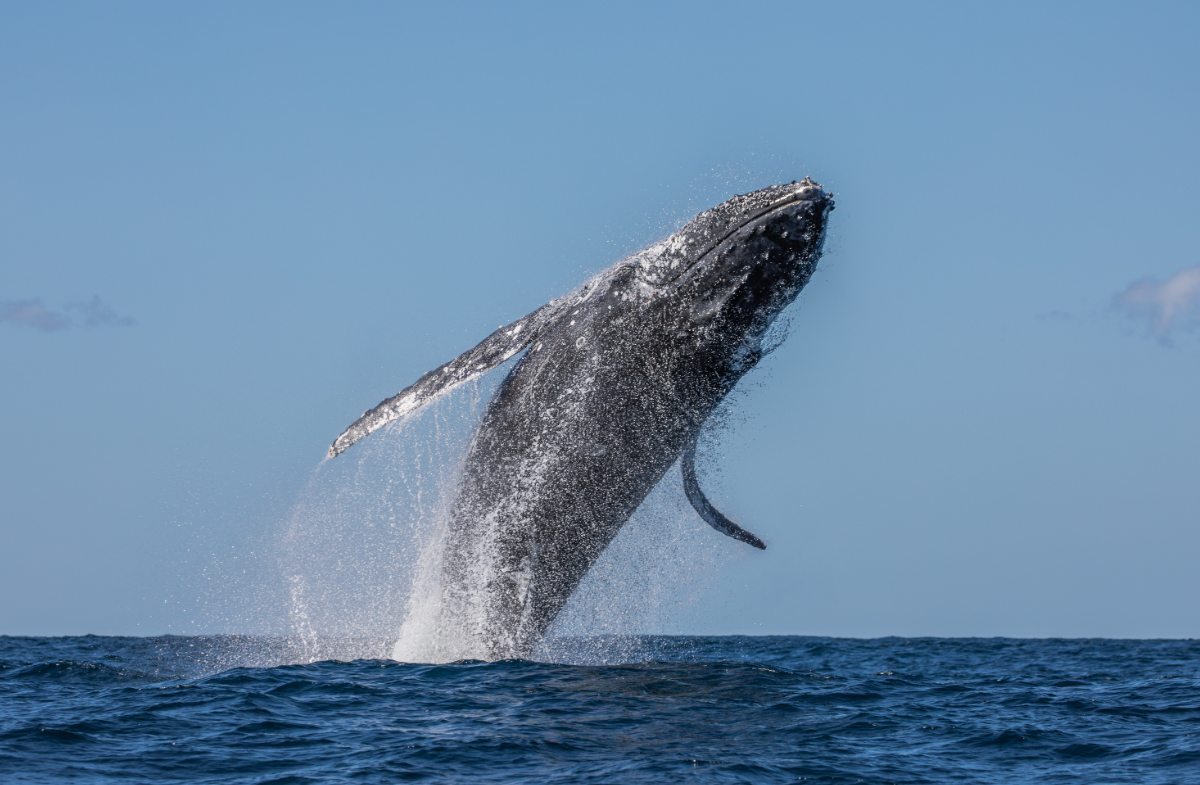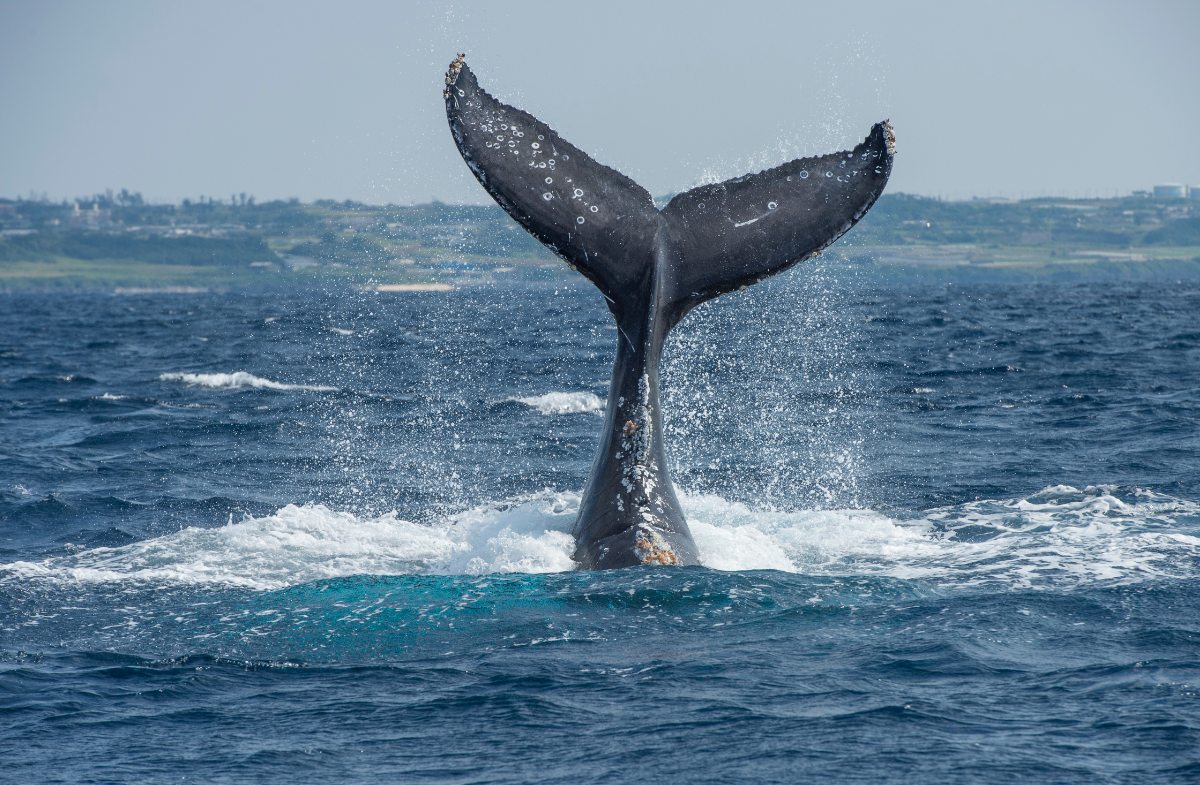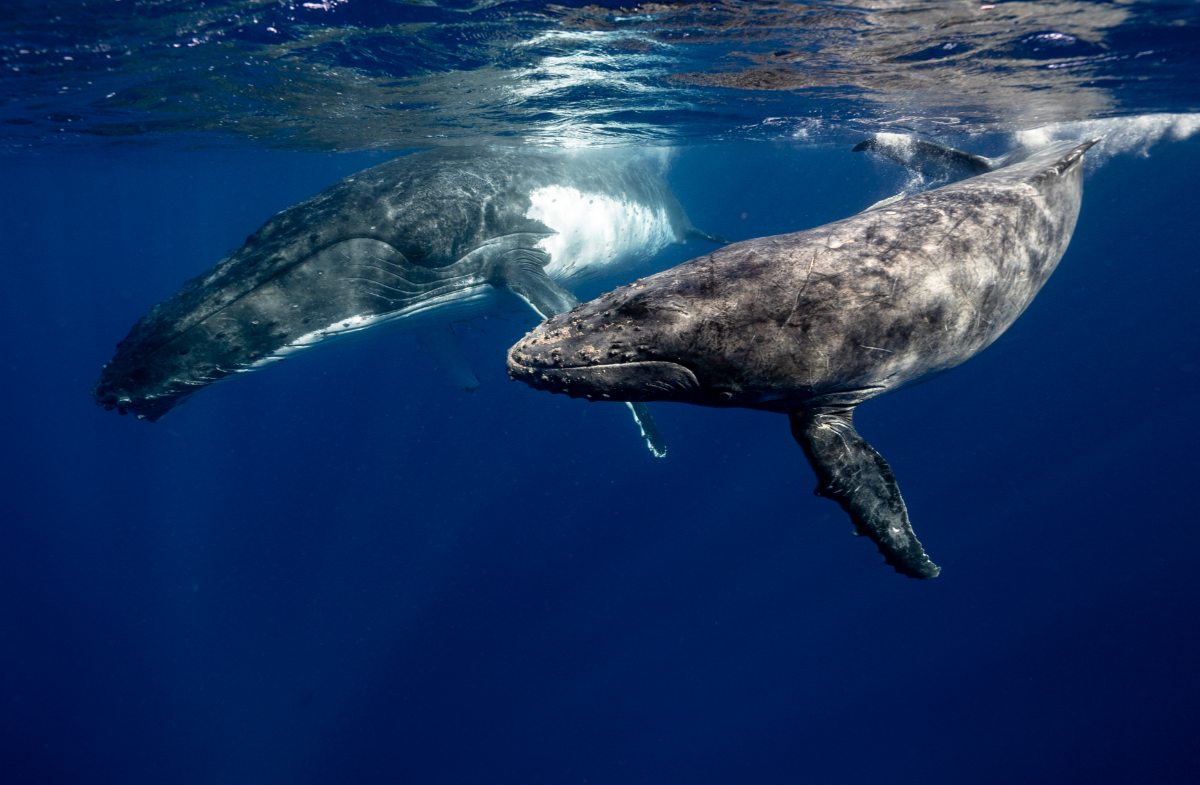


Every year, a mysterious and captivating phenomenon occurs in the waters of the Caribbean, a spectacle that attracts thousands of tourists and leaves everyone speechless. What secret does Samaná hide that, like a magnet, attracts these majestic creatures of the ocean? Humpback whales, with their impressive leaps and songs, choose this corner of the world, and the reason is an enigma that many wish to discover.
Dominican Republic, with its rich cultural and natural heritage, has always been a coveted tourist destination. From the vibrant streets of Santo Domingo to the golden beaches of Punta Cana, this Caribbean country offers a variety of experiences. But it is in Samaná where nature unfolds a spectacle that transcends the ordinary. Here, the confluence of fauna, flora and culture creates a mosaic that not only embellishes the Dominican landscape, but also invites deep reflection on our connection to nature.
The waters of the Caribbean, with their turquoise tones and enveloping warmth, become the stage for an ancestral dance. Humpback whales, majestic and graceful, emerge from the depths to perform a ritual that seems to be taken from a dream. With movements that defy their size, these giants of the sea leap out of the water, breaking the surface in a spectacle of strength and beauty. Each leap, each song, is a call, a serenade that resounds in the depths, crossing miles and miles of ocean.
This aquatic dance is not only a delight for the eyes, but also a testimony to the cycle of life and the perpetuation of a species. From January to the end of March, the warm waters of Samaná become the sanctuary of these creatures, which travel from the cold North Atlantic to mate and give life to the next generation. It is a magical season, where tourism and nature converge, offering visitors a unique opportunity to witness one of the most impressive natural spectacles on the planet.
Samana is not only a renowned tourist destination in the Dominican Republic, it is also a refuge, a sanctuary where marine life flourishes with unparalleled freedom and protection. The history of the marine mammal sanctuary in Samaná is one of passion, dedication and a deep respect for nature. Since ancient times, local communities have watched with awe and reverence the annual return of humpback whales, recognizing the importance of these waters as a sacred place for these cetaceans.
As time passed and tourism interest increased, the need to protect and conserve this habitat became evident. The sanctuary not only serves as a refuge for the whales during their mating ritual, but also as a home for a variety of cetaceans and other marine species. Its existence ensures that future generations can continue to marvel at this natural spectacle and that the whales have a safe place to continue their life cycle.

The conservation of Samaná's rich biodiversity would not be possible without the intervention and support of the Ministry of Environment and Natural Resources. This agency has played a crucial role in implementing protection, research, and education measures to ensure that the sanctuary maintains its integrity and remains a refuge for whales and other marine mammals.
In addition, the Ministry has worked hard to promote responsible tourism in the region. Through regulations, education programs, and collaborations with local tour operators, they ensure that every visitor to Samaná understands and respects the importance of the sanctuary. This synergy between conservation and tourism not only benefits local wildlife, but also guarantees an authentic and enriching experience for those who decide to embark on the adventure of observing these majestic creatures in their natural habitat.
Imagine a moment where time seems to stand still, where the vast ocean becomes a stage and you are a privileged spectator. The silence is broken by a subtle song, a melody echoing from the depths. And then, with an elegance that defies its size, a humpback whale emerges, its body glistening under the Caribbean sun, performing breathtaking pirouettes and jumps. Being just a few meters from the boat and witnessing this dance is an experience that touches the soul, a memory that is engraved in the heart forever.
But this transcendental experience would not be possible without the right boats and expert tour guides. They are the guardians of this ritual, those who, with respect and knowledge, bring us closer to these creatures without disturbing their peace. Their role is essential, not only to guarantee the safety of visitors but also to protect the whales, ensuring that this encounter is harmonious for both parties.
Beyond the marine mammal sanctuary, Samaná and its surroundings are home to natural jewels that are essential to the region's biodiversity. One of these jewels is Los Haitises National Park, a paradise of mangroves, caves and rainforests that serves as a refuge for a multitude of species. This park, along with other protected areas, forms a conservation network that guarantees the survival of the Dominican Republic's rich fauna and flora.
These areas not only protect the species that live within their boundaries, but also play a crucial role in educating and raising public awareness. By visiting these places, tourists can learn about the importance of conservation, the country's rich biodiversity and the role that everyone can play in its protection. Ultimately, these protected areas are a reminder of the beauty of the natural world and our shared responsibility to care for it for future generations.
Samana is much more than a haven for humpback whales. It is a mosaic of life, a melting pot of biodiversity that extends from its golden beaches to its lush tropical forests. The Samana peninsula, with its unique location in the Caribbean, is home to a variety of ecosystems that are home to an impressive diversity of flora and fauna.
Mangroves, which act as natural barriers and nurseries for many marine species, are intertwined with rainforests where exotic orchids and tree ferns grow in abundance. These forests are home to endemic birds, reptiles and a variety of mammals that make Samaná a nature lover's paradise. The surrounding nutrient-rich waters attract not only humpback whales, but also dolphins, manatees and a multitude of colorful fish that bring the coral reefs to life.

Among the many treasures that adorn the coast of Samana, Cayo Levantado shines with its own light. This small island, also known as "Bacardi Island" due to its appearance in a famous rum commercial, is an oasis of natural beauty. Its white-sand beaches, lined with palm trees, contrast with the intense blue of the sea, creating a postcard-worthy landscape.
But Cayo Levantado is not only a destination for beach lovers. Its ecological importance lies in its biological diversity and its role as a refuge for diverse species of birds and marine life. The mangroves and coral reefs surrounding the island are essential to the health of the region's marine ecosystem. When visiting Cayo Levantado, one is not only immersed in its beauty, but also in the rich ecological tapestry that Samana and its surroundings have to offer.
The relationship between the inhabitants of Samaná and the humpback whales transcends the merely ecological. It is a connection woven into the cultural tapestry of the region. For generations, whales have been the protagonists of stories and legends, becoming symbols of the majesty and mystery of the sea. The elders say that whales are guardians of the ocean, beings that carry with them the wisdom of the depths and that, with their songs, narrate ancient stories of the seas.
These stories and legends have fostered a deep respect for these creatures in the local community. Whales are not seen simply as animals or tourist attractions; they are an integral part of Samaná's identity. The annual arrival of the whales is a celebrated event, a reminder of the continuity of life and the cycles of nature that have witnessed the evolution of the community.
The relationship between the inhabitants of Samaná and the whales is a beautiful example of coexistence and mutual respect. Fishermen, tour guides and residents understand the importance of protecting these creatures and their habitat. This harmony between humans and whales is not only essential for the conservation of the species, but also enriches the local culture, offering visitors a unique perspective on the interdependence between man and nature.
Tourism, when carried out in a responsible and conscious manner, has the power not only to educate and raise awareness, but also to actively contribute to the conservation of nature. In the context of Samana and humpback whales, responsible tourism plays a crucial role. Every visitor has the opportunity to become an ambassador for conservation, carrying with them the message of the importance of protecting these majestic creatures and their environment.
Whales, with their majesty and role in the balance of the marine ecosystem, are an invaluable resource. However, their proximity to the coasts and their interaction with tourist vessels can pose risks if not properly managed. This is where regulations and conditions for sustainable tourism come into play. These regulations, established by local and national agencies, ensure that vessels maintain a safe distance from the whales, that visitors do not interfere with their natural behavior, and that the environmental impact of tourism activities is minimal.
Furthermore, sustainable tourism is not just about following rules, it is about adopting a mindset. It is about understanding that, as visitors, we have a responsibility to leave a positive impact, to learn and to share what we learn. By choosing responsible tour operators, following established guidelines and respecting nature, every tourist helps ensure that future generations will also be able to marvel at the spectacle of humpback whales in Samaná.
Visiting the humpback whale sanctuary in Samaná is an experience that requires some planning to make the most of it. The optimal season for sightings of these majestic creatures is from January to the end of March, when the whales visit the warm waters of Samaná for their mating ritual.
For those interested in immersing themselves in this experience, there are several excursions available that offer the opportunity to observe the whales in their natural habitat. It is essential to choose responsible, licensed tour operators that respect regulations and prioritize the safety and well-being of the whales and visitors. In addition, it is recommended to bring binoculars, sunscreen, and a camera to capture those unforgettable moments.

Samaná, with its rich biodiversity and its role as a sanctuary for humpback whales, is a treasure in the heart of the Dominican Republic. The symbiotic relationship between the whales and Samaná is a testament to the wonder of nature and the ability of humans to coexist and protect it. For those seeking a unique tourism experience that combines natural beauty with education and conservation, Samana is the perfect destination.
We invite everyone to experience this natural spectacle, to feel the thrill of watching a whale jump out of the water, to listen to its songs and to be part of this miracle of nature.
Ready to witness the majestic dance of the humpback whales in Samana? Find out more and book your Humpback Whales Samana tour with JackCana Tours.